
This guide is to show you how to bootstrap up to microchip production with an absolute minimum of electronics 3.
It is also intended as a handy resource to paste a link to whenever someone claims, incorrectly, that you need 44 tflops just to make microchips and that the jump between mid and lategame is too big.
TL;DR
You do not need “a data center with 44 tflops just to make microchips.” This setup will make microchips (albeit s l o w l y), and uses no more than 4 tflops.

(Two important details: the balancer and sorter are both needed; the balancer on the left must be set to prefer the input coming from the machine and the sorter needs to sort out the completed microchip. The setup will seize up if either isn’t set).
Slightly Longer TL;DR:
This may or may not be like other build ’em ups you’ve played, but in CoI production facilities:
- Have separate internal storage for different inputs that can individually be filled
- Will happily have 2 (or 12!) modes active simultaneously and use whatever inputs they have at the time
This means you can loop a single microchip machine back on itself, and it works perfectly fine. See below.

Longer Guide Style Guide
So you’re struggling through midgame and it’s time to start getting that sweet sweet purple construction and science going. However, you need these microchip things. You check. Twelve steps!? And they need.. tflops? How will I ever do this?
It is very simple.
Step 1: Acquire at least 100 microchips

If you are willing to micro (and wait), you can start your server snowballing with roughly 100 microchips. This will happen completely naturally if you have upgraded your ship and kept exploring; each microchip can be processed into electronics III. If a battle ends and you get 15 microchips and 15 red electronics, you just got 30 microchips my friend.
If you have somehow not found microchips or you found a way to dump them into the sea, you should not fear. There is a trade deal at one of the settlements to find which will exchange gold for chips. Note that from a pure economical efficiency standpoint, this is pretty bad–the gold-microchip ratio of your own production is 1-1, and this deal is 4-1. However, making gold does not require servers, and a few hundred gold is a tiny price to pay to get things kickstarted if you’re struggling at this point.

Step 2: Set up a data center
A data center is a special building that holds servers and generates tflops. You get 1 tflop from every 20 servers you cram into it; servers-red electronics are 1-1. This is the bulk of your initial investment. If you’re being extremely lean, you really only need 4 tflops. The more you have, the faster everything goes.
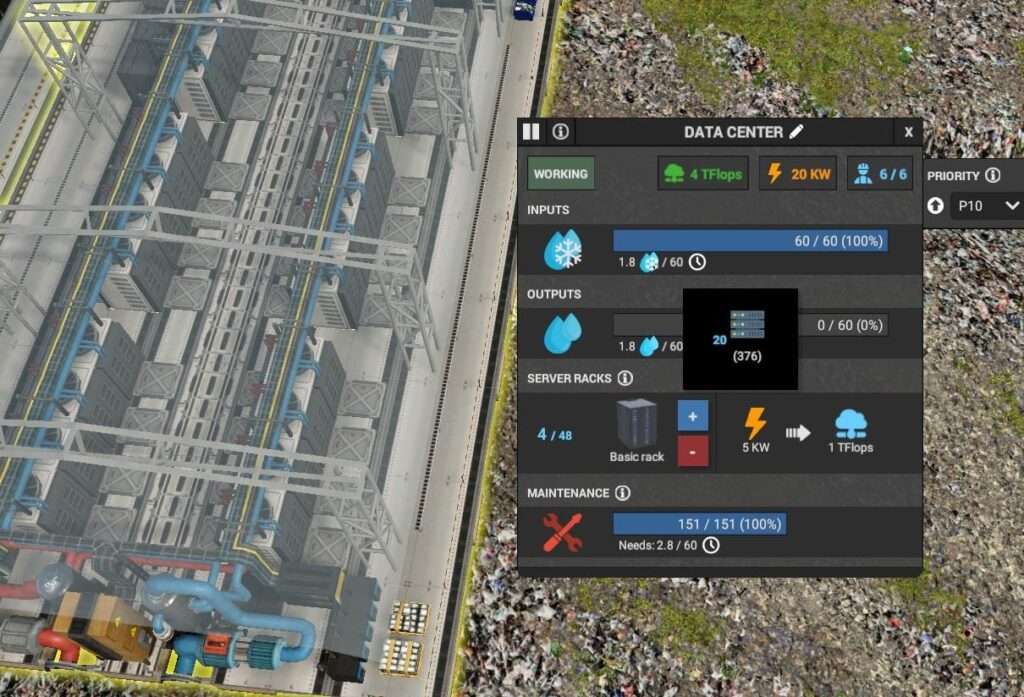
Step 3: Make yourself some purple construction
The first job for your tflops is running some robots to make you some purple construction. You can pause it once you have 110; that’s how many you’ll need to make your microchip machine and silicon crystallizer.

Step 4: Crystallize Silicon
This is where the tflop pausing micro gets to be pretty annoying if you really only have 4, but–the crystallizer makes wafers much, much faster than your microchip machine will be able to use them. You can leave it unpaused attached to the belt and let it build up a buffer, or manually have it spit out a few more wafers when your microchip line runs out–either way it won’t be eating tflops the vast majority of the time.

Step 5: Make some Chips
The basic setup is pictured. It is critical that the balancer on the wafer side is set to prefer the belt coming back around from the machine, and that the output sorter is set to sort out microchips.

It won’t affect the throughput in the very long term but it will significantly aid your sanity and patience if you completely invert the priorities from their defaults; you want it to go from processing wafers to 1a at the bottom and 4b to microchips at the top. This process can be quite painful (as of current v0.4.7d patch) as the scroll bar snaps back to the top of the pane as soon as you press anything and they’re all silicon waffles of various colors. Just remember you want it to go gold, plastic, water in order by numbers and you’ll be OK.
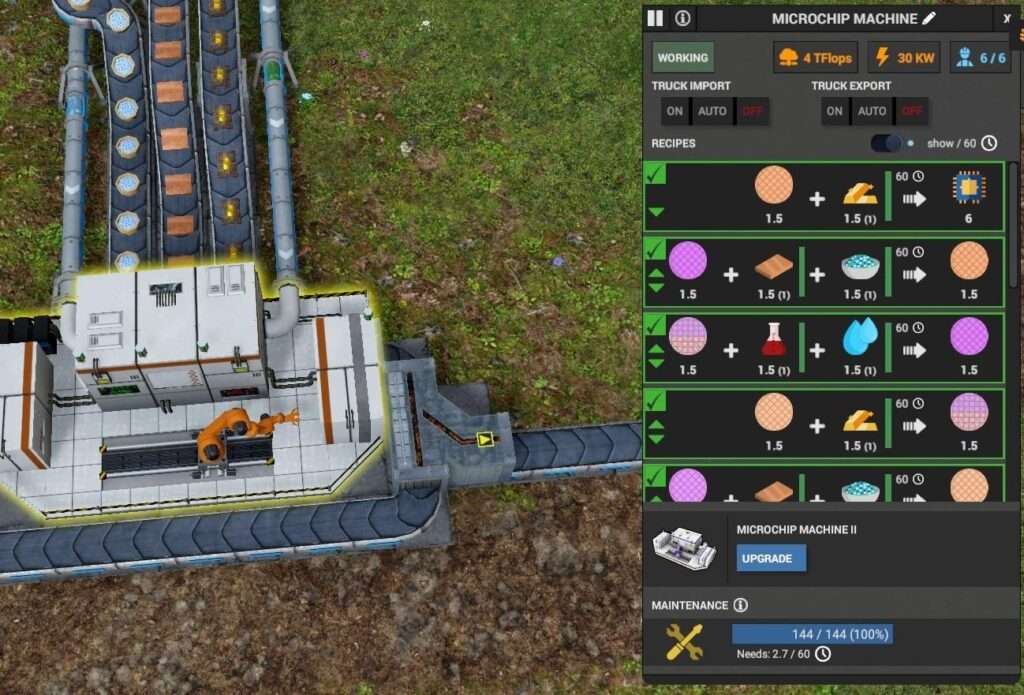
If you want, you can sit and watch as it slowly works its way up. This takes, uh, some time.

And finally, success!
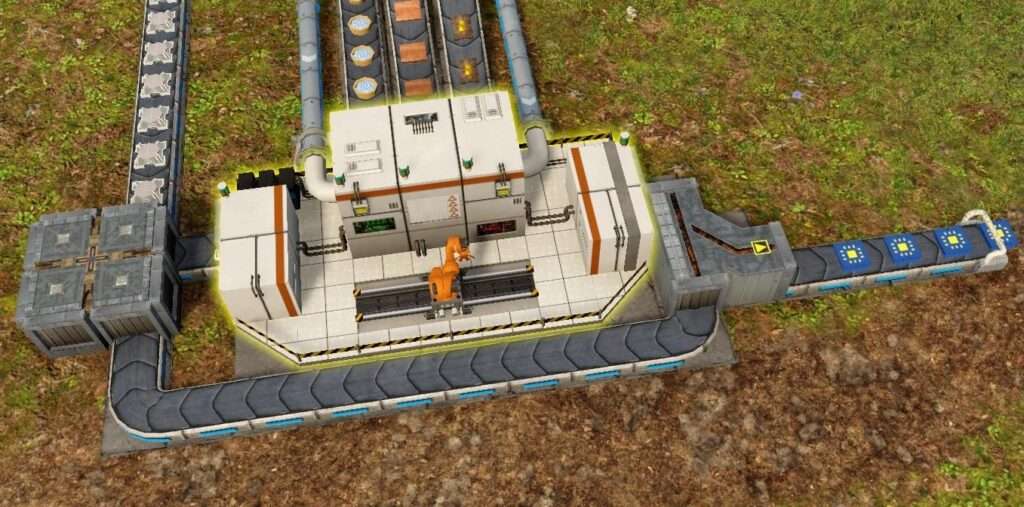
Conclusions and Recommendations
Should you follow this guide? Honestly, probably not. There are 2 reasons.
- 1) It takes forever.
- 2) You can and will get many more than 100 microchips/red electronics/fully made servers from exploring/trading away your gold.
My purpose with this guide is to illustrate the maximally tflop efficient strategy to show you that there is, under no circumstances, a requirement to get 12 microchip machines worth of tflops up and running before you can make your own microchips.
My preferred setup is something more like what is pictured below; I was able to get about enough servers together to sustain 3 at a time. I stapled them together to get the setup below, each manages one “stage” of the process (either a, b, or c) in a loop. This makes a nice little cell that generates an acceptable (to me, anyway) level of spaghetti, I’ve preferred to just copy out more of them rather than set up longer chains. I kept my robotic assembly churning out purple construction and then started dedicating servers to running purple science labs.
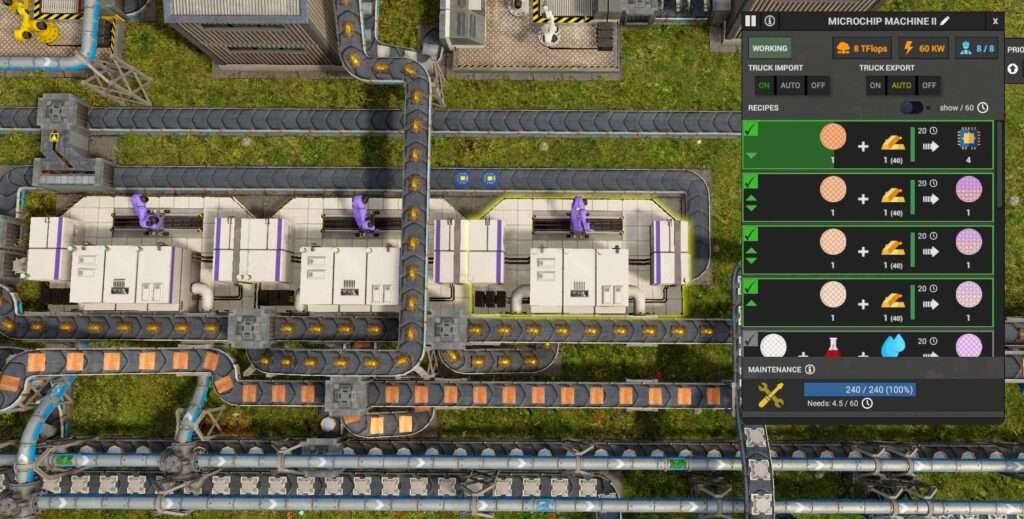
Bear in mind looking at the numbers that I upgraded them to microchip machine IIs
But at that point, it’s the kind of resource management and prioritization that the rest of the game is made up of. I just think a lot of people are struggling with the two concepts laid out in the tl;dr that make it possible to sustain microchip production much more flexibly than you might think. Hopefully this helps convince people to get over that lategame hump and start launching more rockets!



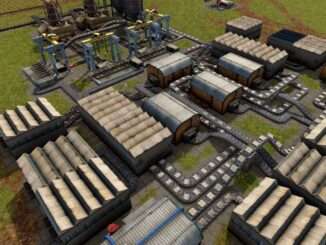

Be the first to comment